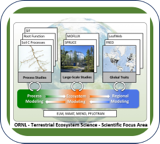Artificial light at night: an underappreciated effect on phenology of deciduous woody plants
| Author | |
|---|---|
| Abstract |
Abstract Artificial light at night (ALAN), an increasing anthropogenic driver, is widespread and shows rapid expansion with potential adverse impact on the terrestrial ecosystem. However, whether and to what extent does ALAN affect plant phenology, a critical factor influencing the timing of terrestrial ecosystem processes, remains unexplored due to limited ALAN observation. Here, we used the Black Marble ALAN product and phenology observations from USA National Phenology Network to investigate the impact of ALAN on deciduous woody plants phenology in the conterminous United States. We found that (1) ALAN significantly advanced the date of breaking leaf buds by 8.9 ± 6.9 days (mean ± SD) and delayed the coloring of leaves by 6.0 ± 11.9 days on average; (2) the magnitude of phenological changes was significantly correlated with the intensity of ALAN (P < 0.001); and (3) there was an interaction between ALAN and temperature on the coloring of leaves, but not on breaking leaf buds. We further showed that under future climate warming scenarios, ALAN will accelerate the advance in breaking leaf buds but exert a more complex effect on the coloring of leaves. This study suggests intensified ALAN may have far-reaching but underappreciated consequences in disrupting key ecosystem functions and services, which requires an interdisciplinary approach to investigate. Developing lighting strategies that minimize the impact of ALAN on ecosystems, especially those embedded and surrounding major cities, is challenging but must be pursued. |
| Year of Publication |
2022
|
| Journal |
PNAS Nexus
|
| Volume |
1
|
| Issue |
2
|
| ISSN Number |
2752-6542
|
| DOI |
10.1093/pnasnexus/pgac046
|
| Download citation |

